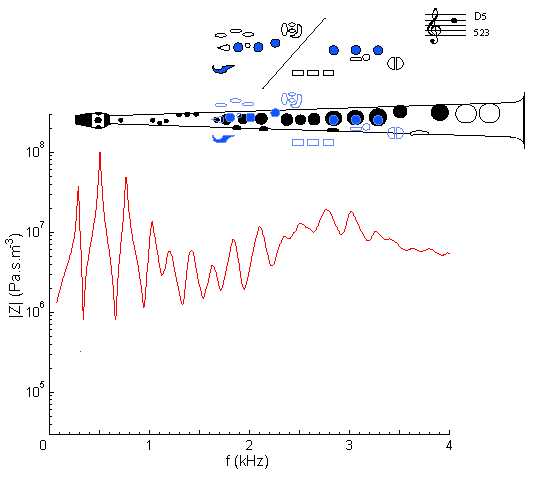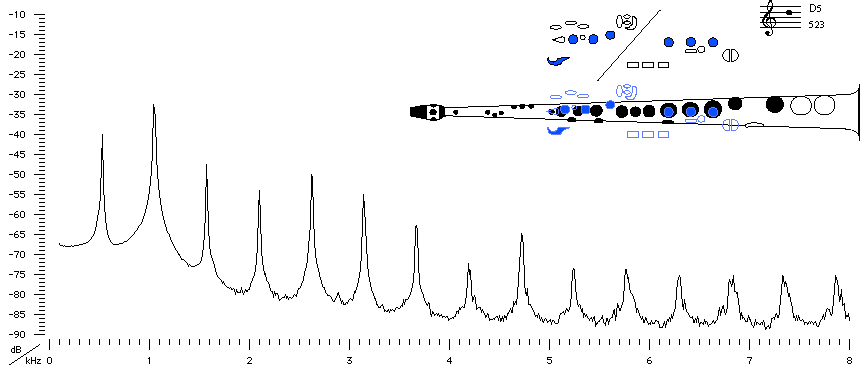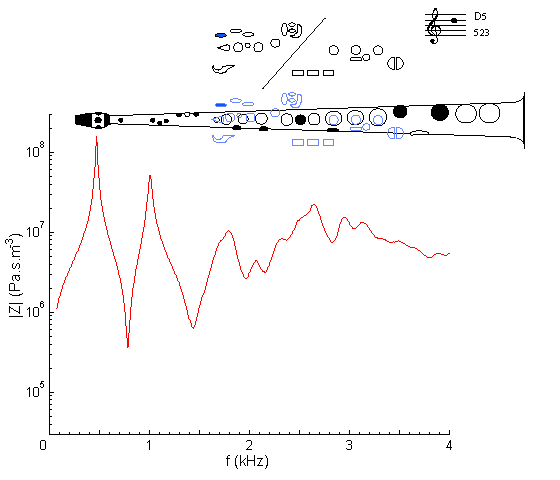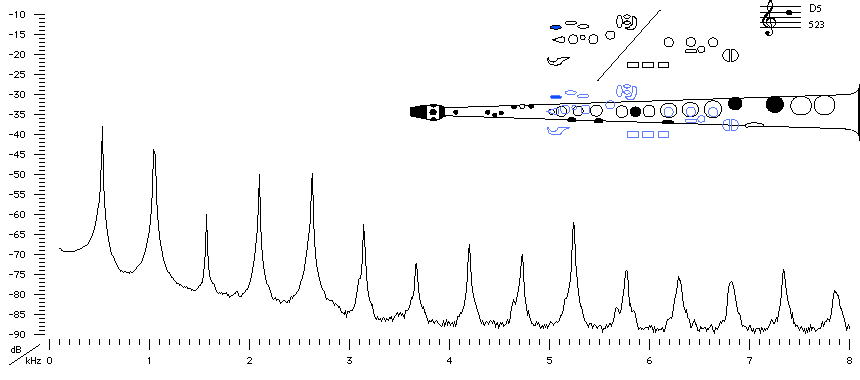| Acoustics of the saxophone |
Bb soprano saxophone |
D5 |

|
Fingering Acoustic schematic Non-specialist introduction
to acoustic impedance Notes are the written pitch. |
This is the first standard fingering for a note in the second register – meaning that it plays at the second peak on the impedance spectrum. It differs from D4 (the corresponding note in the first register) in that it uses a register hole. This causes a leak in the bore that weakens (and mistunes) the first impedance peak, but has little affect on higher peaks – see register hole for an explanation, and compare with D4, whose impedance spectrum is almost identical except for the first peak. Above about 1 kHz, the curve is irregular: see the discussion in cut-off frequency.
Compare with the impedance spectrum for a tenor sax on written D5: same fingering but sounding one octave lower.

Sound spectrum
of a Bb soprano saxophone
played using fingering for D5.
For more explanation, see
Introduction to saxophone acoustics.
The higher harmonics occur because the vibration of the reed and the acoustic component of the air flowing past it involve nonlinear processes, such as the turbulent loss of kinetic energy of the air. This nonlinearity produces the higher harmonics. The reed motion becomes very nonlinear when it begins to strike the lay. At this dynamic level, the power of the fundament at f0 changes relatively little, and blowing harder instead adds more power to the higher harmonics, making the sound brighter. In its low range, and especially when played loudly, the fundamental of the saxophone is often weaker than some of the harmonics, in part due to the relatively weak first impedance peak. For more detail, see What is a sound spectrum?
In the second register, the first one or two harmonics coincide with peaks in the impedance spectrum, so the bore helps radiate them strongly. For high harmonics, there are usually no corresponding strong resonances. However, these radiate fairly well anyway, because the saxophone is a reasonably good megaphone at these frequencies. (The small peak in the sound spectrum at 2.9 kHz is probably broad band (breathy) sound being particularly well radiated by the bore resonance at that frequency.)
Alternative Fingering |
Bb soprano saxophone |
 |

|
Contact:
Joe Wolfe
/ J.Wolfe@unsw.edu.au |